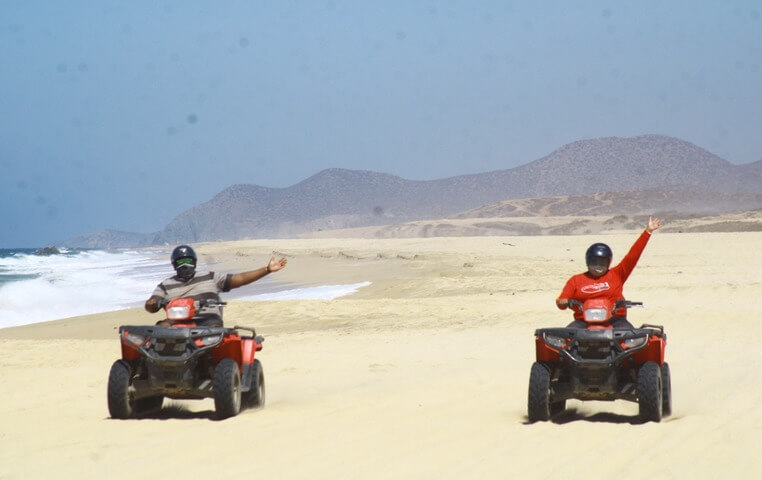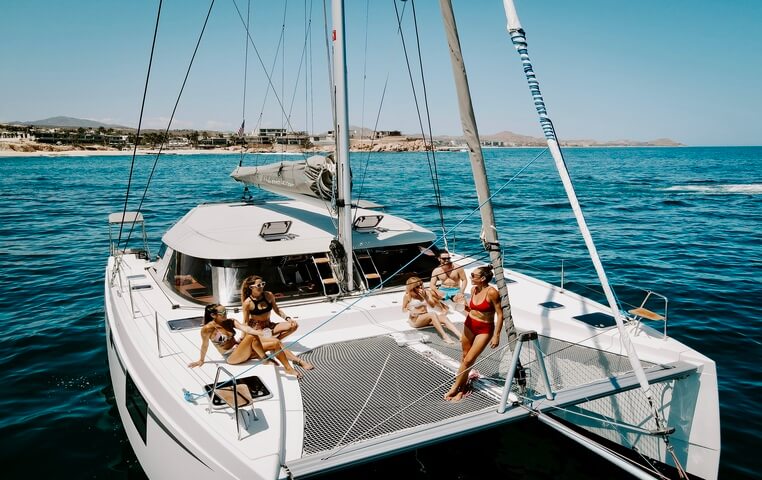Cabo San Lucas

Cabo San Lucas is a beautiful resort city located at the southern tip of the Baja California Peninsula in Mexico. Known for its stunning beaches, crystal-clear waters, and vibrant nightlife, Cabo San Lucas is a popular destination for travelers from around the world. In this guide, we'll take a closer look at what makes Cabo San Lucas such a special place, and provide you with some tips on how to make the most of your visit.
Cabo San Lucas
Cabo San Lucas is a beautiful resort city located at the southern tip of the Baja California Peninsula in Mexico. Known for its stunning beaches, crystal-clear waters, and vibrant nightlife, Cabo San Lucas is a popular destination for travelers from around the world. In this guide, we'll take a closer look at what makes Cabo San Lucas such a special place, and provide you with some tips on how to make the most of your visit.

Getting to Cabo San Lucas
Cabo San Lucas is easily accessible by air, with Los Cabos International Airport (SJD) located just a short drive from the city center. Many major airlines offer direct flights to Los Cabos from cities throughout the United States, Canada, and Mexico. Once you arrive at the airport, you can take a shuttle or taxi to your hotel or resort.
Things to Do in Cabo San Lucas
There's no shortage of things to do in Cabo San Lucas, whether you're looking for adventure, relaxation, or a little bit of both. Here are some of the top attractions and activities in the area:
1. Beaches: Cabo San Lucas is known for its beautiful beaches, and there are plenty to choose from. Some of the most popular include Medano Beach, Playa del Amor, and Lover's Beach. Whether you're looking to swim, sunbathe, or enjoy water sports, there's a beach for everyone in Cabo San Lucas.
2. Water activities: Speaking of water sports, Cabo San Lucas is the perfect place to try your hand at activities like snorkeling, scuba diving, and surfing. There are also plenty of boat tours available, including whale watching tours, sunset cruises, and fishing charters.
3. Land activities: If you prefer to stay on land, there are plenty of activities to keep you busy in Cabo San Lucas as well. Take a hike through the desert landscape, go horseback riding, or try your hand at golf on one of the city's many courses.
4. Nightlife: Cabo San Lucas is known for its vibrant nightlife, with plenty of bars, clubs, and restaurants to choose from. Whether you're looking for a romantic dinner or a night out on the town, you'll find plenty of options in Cabo San Lucas.
A great place to book your safe Adventures is with us, www.cabodaytrips.com.

Where to Stay in Cabo San Lucas
Cabo San Lucas offers a wide range of accommodations, from budget-friendly hotels to luxury resorts. Some of the most popular areas to stay include the Cabo San Lucas Marina, the Pedregal neighborhood, and the Corridor, which stretches between Cabo San Lucas and San Jose del Cabo. When choosing a place to stay, consider your budget, preferred location, and the amenities you're looking for.
Tips for Visiting Cabo San Lucas
To make the most of your visit to Cabo San Lucas, here are a few tips to keep in mind:
1. Stay hydrated: Cabo San Lucas can get quite hot, so it's important to drink plenty of water to stay hydrated. Consider carrying a refillable water bottle with you, and take breaks in the shade when you need to cool off.
2. Be aware of the local culture: Mexico has a rich and diverse culture, and it's important to be respectful of local customs and traditions. Learn a few key phrases in Spanish, dress appropriately for the weather and activities you have planned, and be mindful of local customs and etiquette.
3. Bring along plenty of Sunscreen, protect your Skin at all times, with 360 Sunny Days Sunburns are common along the visitors that don’t take the necessary precautions. Get your tan safely and avoid Sunburn at all times.
4. The USD is a currency used everywhere; no need to change into the Mexican currency, the Mexican Peso. All prices are usually shown in USD and with bad Exchange rates in the shops and stores you are better of paying in USD.

Weather in Cabo San Lucas
As it is on the edge of the desert that covers most of the Baja California peninsula, it is one of the sunniest locations in the world, with an average of 330 days of sunshine per year. The climate is characterized as hot and dry to the north of the town of San José del Cabo, hot and semi moist in San José and along the southern coast and temperate and dry in the highest elevations.
Cabo San Lucas average temperature chart
| Month | High | Low | Month | High | Low |
|---|---|---|---|---|---|
| January | 72-79 | 60-65 | July | 87-92 | 73-79 |
| February | 72-75 | 60-65 | August | 90-95 | 74-80 |
| March | 74-77 | 60-65 | September | 90-95 | 76-80 |
| April | 79-84 | 63-67 | October | 85-91 | 74-79 |
| May | 80-85 | 65-70 | November | 80-85 | 60-70 |
| June | 80-85 | 67-72 | December | 73-80 | 60-70 |
The lowest temperature during night time is in January with an average of 60 to 65 degrees while during the day the average temperature ranges from 72 to 79 degrees. Los Cabos is a privileged place, the weather, sunshine and location are perfecto for your Vacation. Even the Water Temperatures are incredible all year long.
Cabo San Lucas Water Temperatures
The Los Cabos average Sea Temperatures are also something that you can get to envy, it’s a Magic Place and all year long you are able to do Water Sports, Snorkeling, Kayaking, jet Skiing, Parasailing and more. The average Sea Temperatures are;

With water temperatures even in January and February in the low 70, s Water Activities all year around are being enjoyed and done by the millions of visitors to the Los Cabo Paradise.
The Arch of Cabo San Lucas, the Main Attraction
The arch of Cabo San Lucas, is a distinctive rock formation at the southern tip of Cabo San Lucas, which is itself the extreme southern end of Mexico's Baja California Peninsula. The arch is locally known as "El Arco," which means "the arch" in Spanish, or "Land's End. It is here that the Pacific Ocean becomes the Gulf of California. This area is widely used in hotel advertising in the Los Cabos Corridor. This spot is a popular gathering area for sea lions and is frequented by tourists. It is three stories tall and was formed from natural erosion. The Arch of Cabo San Lucas is adjacent to Lovers Beach on the Sea of Cortez side and Divorce Beach on the rougher Pacific Ocean side. The Arch is accessible by land only if you approach it by placing yourself at the beach of the last hotel on the Pacific (Finisterra), you would have to climb some very big rocks not very safe, once you do that, you will be at the very tip of the peninsula and a few steps from El Arco. Basement rock in Los Cabos formed through intrusive igneous processes c. 115 million years ago, during the Cretaceous period. For your tour you are using a much safer way, a Boat.
Lovers and Divorce Beach, Lovers Beach is a beautiful beach located on the Sea of Cortes side of the Arch, fantastic white sand, beautiful crystal-clear blue waters and one of Cabos Main Attractions. On Lovers Beach explore the San Andres cove or walk over to the Pacific side of lands’ End, the Divorce beach, the contrary to Lovers Beach, tremendous waves and undertow, very rough and dangerous yet beautiful not getting too close to shore.
Pelicans Rock, Los Cabos best and most popular Snorkeling spot with thousands of colorful tropical Fish, during may of the small Boat Tours and Glass Bottom Boat Tours you will look at a large variety of Tropical Fish through the Glass Bottom of your Boat, a must do stop in Cabo. Pelicans Rock is famous for Snorkeling due to the tremendous variety of Sea Flora and Fauna.
Sea Lions Colony, Meet the California Sea Lion; on quiet evenings and early mornings, sitting on a little balcony of a Marina Apartment, you can often hear the barking of the sea lions in the marina, almost a kilometer away. What a happy sound! Sea lions are very intelligent and playful and encountering them in the water, their natural environment, is always exciting and fun. Scientific name: Zalophus californianus. Zalophus (Za – in Greek intensive, Lophius – crest, referring to the Sagittal Crest of males, distinguishing the genus). Californianus (specifying their geographic breeding areas). Family – Otariidae (Eared Seals). The California Sea Lion is an air breathing, warm blooded, milk sucking marine mammal that, surprisingly, descended from the family of the bears. As part of the Pinnipeds clade, they are very similar to seals, but have some distinctive features. They are a part of the Eared Seals family, along with Fur seals and other sea lion species, as they have external ear flaps. They also have longer flippers, which allows them to ‘walk’ on land, though it looks more like they are dancing. Another interesting ‘move’ the sea lions can do is to bend their necks all the way to their hind-flippers, thanks to their extra flexible spine. This gives them the ability to turn abruptly when swimming in the water, all while maintaining hydrodynamics. Female California Sea Lions are light-chocolate brown in color, have a flat head, can grow up to 2 meters/6 feet and weigh up to 110 kg/250 lbs. Males are dark brown to black and have a big hump on their forehead called the Sagittal Crest. This protruding hump makes it easy to differentiate between males and females along with their size. Males can grow up to 2.5 meters/7 feet and weigh 520 kg/1150 lbs or more. That’s almost 5 times more than females! Right beside the Arch is the Los Cabos Sea Lions Colony and its part of your stops during most Boat Tours in Cabo San Lucas.
